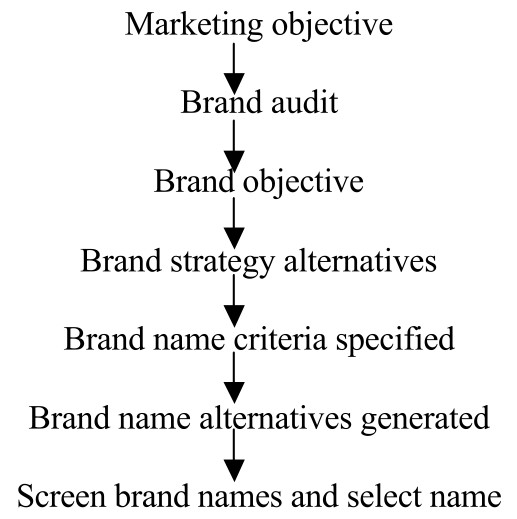When looking at the way companies select brand names, many appear to follow a process of generating names and then assessing these against pre-determined criteria. For example, with the opportunities presented by the opening of European markets, the following stages of questioning are usual in brand name selection –
- First, in which geographical markets does the firm intend its brand to compete? The decision becomes, if for no other reason than the pronounce ability of the name. For example, in 1988 Whirlpool, the American white goods manufacturer, acquired 53 percent of Philips’ home appliances business and are obliged by the agreement to phase out the Philips brand name by 1998. A dual brand name policy is currently being run, raising consumers’ awareness of Whirlpool across Europe. However, in France Whirlpool is an extremely difficult name to pronounce.
- Secondly, even if the consumer can pronounce a name, the next question would focus on any other meanings or associations the name might have in different countries.
- Thirdly, if these issues do not raise problems, the next problem is whether the brand name is available for use on an international basis and whether it can be protected. A major cosmetics house had to reschedule the launch of one of its brands since the legal aspects of the pan-European brand name search revealed that the original name was already being used by a distant competitor in one part of Europe.
Whilst the approach described has the strength of chiding the name against a set of criteria, its weakness is that its tactical orientation doesn’t relate the brand name to the wider company objectives that the brand is attempting to satisfy. A better way of developing the brand’s name would be to follow the flow chart in Figure.

What little has been published about the way firms select brand names shows that few follow a systematic process. The scheme developed in Figure builds on best current practice.
Marketing Objective
The marketer needs to be certain about the marketing objectives that the brand must contribute towards. Clearly stated, quantified targets must be available for each segment showing the level of sales expected from each of the product groups comprising the company’s portfolio. The marketing objectives will give an indication as to whether emphasis is being placed on gaining sales from existing products to existing customers, or whether new horizons are envisaged (e.g. through either product extensions or new customer groups). By having clearly defined marketing objectives, brand managers are then able to consider how each of their brands needs to contribute towards satisfying the overall marketing objectives.
The Brand Audit
The internal and external forces that influence the brand need to be identified, such as company resources, competitive intensity, supplier power, threats from substitutes, buyer concentration, economic conditions, and so on. This audit should help identify a few of the criteria that the name must satisfy. For example, if the brand audit showed that the firm has a superior battery that consumers valued because of the battery’s long life, then one issue the name would have to satisfy would be its reinforcement of the critical success factor ’barter long life’.
Brand Objective
In the brand-planning document, clear statements about individual brand objectives should be made, again helping clarify the criteria that the brand name must satisfy. Statements about anticipated levels of sales, through different distributors, to specified customers, will help the marketer to identify criteria for the name to meet. For example, if the primary market for a new brand of rechargeable batteries is 10-14 year old boys who are radio-controlled car racing enthusiasts, and if the secondary market is fathers who help their sons, the primary target’s need may be for long inter-charge periods, whilst the secondary market may be more concerned about purchase cost. The primary need for the brand name would be to communicate power delivery, with an undertone about cost.
Brand Strategy Alternatives
The marketer must be clear about what broad strategies are envisaged for the brand in order to satisfy the brand objectives. Issues here would include –
- Manufacturer’s brand or distributor’s brand?
- Specialist or niche brand?
- Value-added or low-price positioning?
Brand Name Criteria Specified
The marketer should be able to list the criteria that the brand name must satisfy. They might also’ wish to be learn from other companies’ experiences w/hat appears to work best with brand names.
Brand Name Alternatives Generated
With a clear brief about the challenges that the new brand name must overcome, the marketer can now work with others to stimulate idea, for possible brand names. It is unlikely that the brand managers would work on this alone. Instead, other would join them from the marketing department, by advertising agency staff, by specialist name-generating agencies where appropriate, and by other company employees. Also at this stage a market research agency may be commissioned to undertake some qualitative research to help generate names. Some of the methods that might be used to generate names would be –
- Brainstorming
- Group Discussion
- Management Inspiration
- Word Association
- In-company competitions amongst employees
- Computer generated names.
It is important to stress that, during the name generation stage, any intentions to judge the names must be suppressed. If names are evaluated as they are generated, this impedes the mind’s creative mode and results in a much lower number of names.

